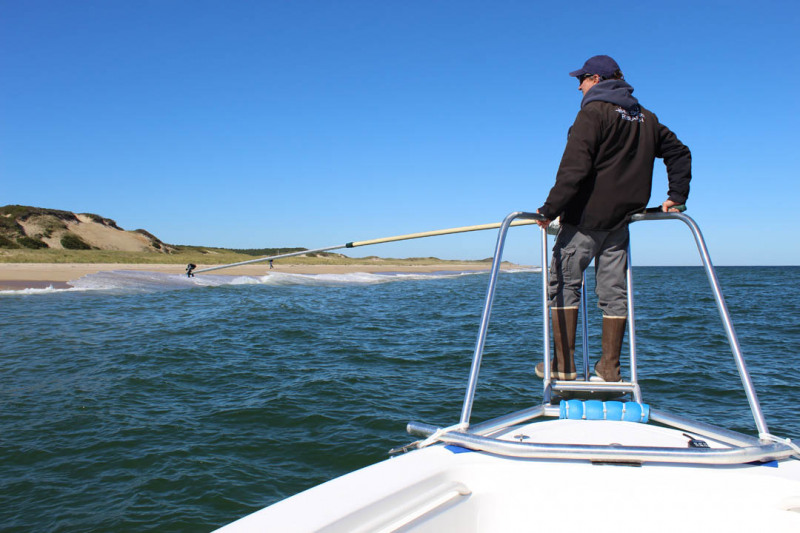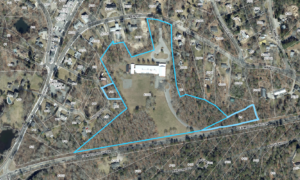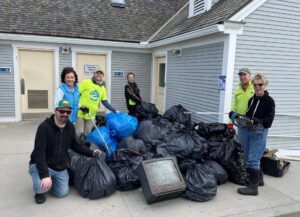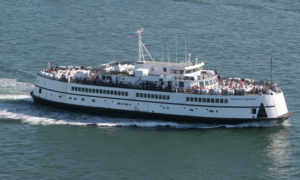CHATHAM – The 2019 shark tagging research season off Cape Cod is winding down, but plenty of great white sharks remain off the coast.
The CapeCod.com Newscenter was granted an opportunity to spend a late September day out on the water with local researchers during a record-breaking year for the number of sharks tagged.
Since 2014, research led by the Massachusetts Division of Marine Fisheries and the Atlantic White Shark Conservancy has been conducted to get a more accurate picture of how many sharks spend their summers in waters off the Cape.
The data gathering portion of the White Shark Population Study wrapped up last fall.
Dr. Greg Skomal, a senior biologist with the DMF, and Staff Scientist with the Atlantic White Shark Conservancy, Megan Winton, began conducting new research in June focused on getting a better understanding of the predatory behavior of white sharks in the region.
“We’re drilling a lot deeper into the predator/prey relationship between sharks and seals,” Skomal said.
Skomal said it is clear that the sharks are feeding in shallow waters, especially following the two shark attacks off the Outer Cape late in the summer of 2018.
“It obviously exposes people to some level of risk,” he said.
Last August, a New York man was attacked off Truro and has recovered from the serious wounds. A month later in September, 26-year-old Arthur Medici, of Revere, was killed after an attack by a great white off Wellfleet.
“We feel that if we can better understand when where and how white sharks attack and kill seals we’ll be able to, perhaps, collect the kinds of information necessary to enhance public safety,” Skomal said.
A white shark was spotted attacking seal off Nauset Beach in Orleans on Sunday, according to the Sharktivity app.
The researchers are using acoustic tags, which provide data about where the sharks spend their time around the Cape.
They are also using more sophisticated tags that give behavioral information, or acceleration data loggers.
“That gives us really fine scale movement information that allows us to pinpoint when sharks are attempting to attack and kill seals,” Skomal said. “We are looking at patterns in that behavior.”
The researchers are also expanding their work to examine habitat and how sharks are using the near shore environment to get access to seals. That work is being conducted in partnership with the Center for Coastal Studies in Provincetown.
“They are now mapping parts of Cape Cod for us and we have wired up those areas with acoustic technology so we can get a sense of how the various features that occur around the Cape under water,” Skomal said.
A major difference during the 2019 shark research season compared to last year was the earlier arrival of the apex predators.
“July was an incredible strong month,” he said. “We had white sharks showing up early in July probably as a result of increasing water temperatures in late June.”
White shark activity dipping during the month of August due to some heat spells. Action has picked back up in September and Skomal said it was a busy month.
“One of the things we are really focused on during these months is getting data in the can,” he said. “We don’t have really the time and the luxury of being able to look at much of it yet, which is a little frustrating because people want information as quickly as possible.”
Researchers will begin to analyze the data after the research season on the water ends in late October.
The crew left Ryder’s Cove around 9 a.m. on Friday, September 27 and Skomal began preparing for the trip by setting up his first tag before the vessel reached open water.
Skomal and his team are incredibly efficient while out on the water.
Spotter pilot Wayne Davis locates sharks from the sky and guides the vessel to them.
On this trip, Howdy subbed in for the usual boat captain John King, and steered the vessel. And just like with the New England Patriots it was next man up.
Davis spotted sharks to the North off Truro and Provincetown where the crew spent the morning hours.
When the boat approaches a shark, Winton deploys a device that checks if the shark has been previously tagged. She also records data including the location and the temperature of the water.
Skomal stands on the pulpit of the vessel and first uses an underwater camera attached to a pole to record video of both sides of the shark for identification and sex data.
If the shark remains close enough to the surface he attempts to place a tag at the base of the dorsal fin. The tag is tied around the end of a shorter pole with rubber bands.
The team also attempts to collect post tagging videos if the shark remains close enough.
The first few tagging attempts were unsuccessful as the sharks dove too deep.
An acoustic tag was also detected on the third shark and Skomal gathered more underwater video of the animal.
It wasn’t long before the team tagged its first great white of the trip, a seven- to eight-footer off Truro.
After another successful tagging off Truro the crew headed back south as several more sharks were spotted off Chatham.
Video was taken of several more white sharks off Monomoy and the team had more success and tagged two more sharks.
Many of the sharks spotted throughout the day were between eight and 10 feet and some were even smaller. Two of the sharks tagged were estimated to be 9.5 feet, along with an 8-footer and a 7.5-footer.
Skomal believed many more sharks would have been spotted through Wellfleet and Truro if the water quality had been better and provided more visibility.
“The goal today was to get out and tag a couple sharks and we were able to get four tagged,” he said. “It was a really productive day from our perspective. The more tags we’ve got out the more we are learning about these fish.”
The four tags brought the season total up to 37, which is a record for the team.
Some of those tags have been deployed in Cape Cod Bay this season as the team has expanded its research area.
Skomal said the bay provides different challenges compared to the larger surf, currents and tides of the Outer Cape.
“It’s great to get into the bay because we have heard so much about sharks in the bay from charter captains and private boaters,” Skomal said.
The researchers have been able to confirm the reports of boaters the last few years as there are many smaller white sharks that primarily feed on Billingsgate Shoal and the Brewster Flats.
“They are not very close to land, which tells us they are likely targeting fish,” Skomal said.
Skomal has tagged four sharks in the bay this season.
Interestingly, one of the sharks spotted off Monomoy during the trip who had been previously tagged, Hilary, was one of the first tagged in the bay.
“That’s the first one we have seen back on the outside of the Cape,” Winton said.
Hilary had been detected by a real-time receiver off Head of the Meadow Beach in Truro a few days before.
Skomal said the team has had a successful summer so far and hopes to continue that success through the rest of October.
“The good news for us this time of year is that we have collected a lot of data and that is what you want to do,” Skomal said. “We are equally excited about getting in the lab and figuring out what we can learn from this fairly sizable data set.”
And even though tourists have left Cape Cod, the researchers say the shark population will continue to hang around.
“There are still a lot of sharks around,” said Winton.
Skomal said it is important for the public to remember that peak white shark activity remains into the month of October off the Cape.
“Just because you may not see our boat on the water one day because there are northeasterly winds and a big swell and a lot of chop and it’s ugly it doesn’t the sharks aren’t there either,” he said. “You’ve gone back to school, but the sharks remain through September, through October.”
The sharks normally don’t begin to leave the area until the area begins getting cold northeasterly winds that change water temperatures.
“Sharks will move out generally by mid-November, but some will stick around through as late as mid-December,” he said. “It’s still primetime.”
Winton said not many sharks stay that late, but that there are always a few stragglers.
“Because we are not out in November and December this is exactly what the acoustic data set tells us,” Skomal said.
The team has more than 70 data receivers in its array, but the state also employs more than 100 monitoring white sharks and other species that have been tagged with similar technology.
“We are covering almost border to border,” Skomal said. “We are lacking perhaps parts on the North Shore, but there are a couple up there and all the way to the Rhode Island border.”
The highest density is around Cape Cod, which is the hot zone for the sharks.
“Every year that array expands,” Winton said. “This year we added a lot more receivers in Cape Cod Bay than we have had in the past.”
After the attacks last year, several towns on the Outer Cape, the Cape Cod National Seashore and the state have taken efforts to improve shark safety and communications to quickly respond to emergencies.
“The events of last year were a bit of a wakeup call for everyone, and I think people have modified their behavior,” Skomal said. “I think everybody is communicating, which is important. The towns are communicating with us, we’re communicating with the park service. Everyone is working together to find the best way forward.”
Skomal said actions to prevent attacks are primarily through education and being prepared for an attack event.
“I think the vigilance has certainly stepped up, and people are paying attention,” he said.
By BRIAN MERCHANT, CapeCod.com NewsCenter
























